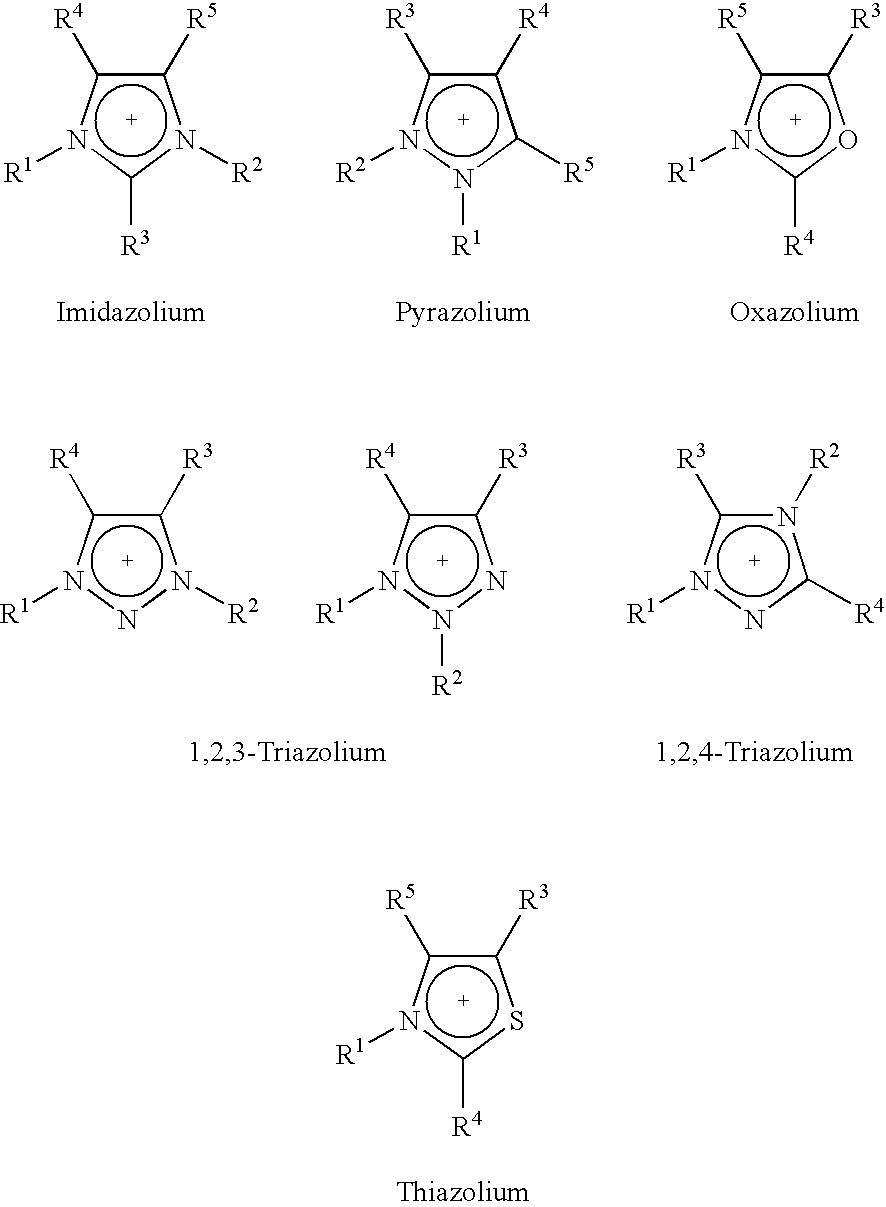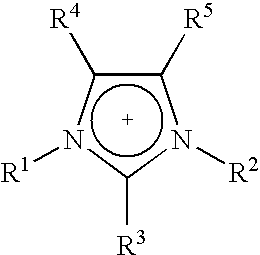Dissolution Method
a technology of dissolution and pulp, applied in the field of dissolution methods, can solve the problems of excessive pulp degradation and considerably slower development of the scientific base of this technology
- Summary
- Abstract
- Description
- Claims
- Application Information
AI Technical Summary
Benefits of technology
Problems solved by technology
Method used
Image
Examples
example 1
[0093]Dissolution of Plywood Sawdust
[0094]50 mg of plywood sawdust was mixed with an ionic liquid (BMIMCI, 5 g, melting point 60° C.) in 1% solution. The resulting mixture was heated by microwaves in a MW reactor designed for organic synthesis in 10 min sequences at temperatures ranging from 80 to 150° C. Partial dissolution could be detected.
[0095]The resulting solution after the experiment was partly cloudy. The cloudiness resulted from the adhesives present in the plywood.
example 2
[0096]Dissolution of Softwood
[0097]112 mg of small chips of Finnish softwood were mixed with an ionic liquid (BMIMCI, 5 g, melting point 60° C.). The resulting mixture was heated by microwaves in a MW reactor designed for organic synthesis in 10 min sequences at temperatures ranging from 80 to 150° C.
[0098]After 10 min at 80° C., the dissolution of the wood was visible. The outer layers of wood sticks became transparent and small fibers appeared on the surface of the sticks. The heating was continued in 10 min sequences at 100° C. for one hour. The wood sticks were gradually dissolved into solution. While decreasing in size, the sticks gradually lost their woodlike structure and became more like a bunch of fibers gradually dissolving into solution. After heating one hour at 150° C. even the still remaining small quantity of undissolved material was completely dissolved resulting in an amber coloured, transparent and viscous solution.
[0099]The ionic liquid having initial melting poin...
example 3
[0100]Dissolution of Straw, 1% Solution
[0101]50 mg of straw was mixed with an ionic liquid (BMIMCI, 5 g, melting point 60° C.) in 1% solution. The resulting mixture was heated by microwaves in a MW reactor designed for organic synthesis for 10 minutes at 170° C. Full dissolution could be detected resulting in a darkish, amber coloured, transparent and viscous solution.
PUM
| Property | Measurement | Unit |
|---|---|---|
| Temperature | aaaaa | aaaaa |
| Fraction | aaaaa | aaaaa |
| Percent by mass | aaaaa | aaaaa |
Abstract
Description
Claims
Application Information
 Login to View More
Login to View More - R&D
- Intellectual Property
- Life Sciences
- Materials
- Tech Scout
- Unparalleled Data Quality
- Higher Quality Content
- 60% Fewer Hallucinations
Browse by: Latest US Patents, China's latest patents, Technical Efficacy Thesaurus, Application Domain, Technology Topic, Popular Technical Reports.
© 2025 PatSnap. All rights reserved.Legal|Privacy policy|Modern Slavery Act Transparency Statement|Sitemap|About US| Contact US: help@patsnap.com



